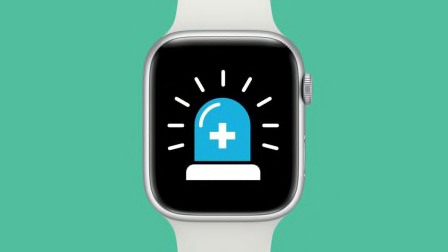How to Choose a Medical Alert System
These wearable devices can help you summon assistance in an emergency. Here's a look at the many options available.

Concerned about falling or needing help with a health problem when you’re alone?
Medical alert systems—where the press of a wearable call button puts you in touch with a dispatcher who can summon emergency help or contact a friend or family member—may offer some reassurance.
“Anyone who is at risk of falling or having a medical emergency” may benefit from such a device, says Leah Bellman, M.S., an occupational therapist and a healthcare process improvement analyst with Commonwealth Care Alliance in Boston.
If you’re considering using such a system, which should you choose? The wide variety of features, service options, and fees can make it challenging to figure out what’s best for you.
3 Key Questions to Answer First
When you’re ready to begin shopping for a medical alert, you’ll need to make three decisions that will affect the overall functionality of your system and how much you’ll pay. The rundown:
1. Do You Want a Home-Based or Mobile System?
Originally, medical alert systems were designed to work inside your home with your landline telephone.
And you can still go that route. Many companies now also offer the option of home-based systems that work over a cellular network for those who might not have a landline.
With these systems, pressing the wearable call button allows you to speak to a dispatcher through a base unit located in your home.
But many companies offer mobile options, too. You can use these systems at home, but they’ll also allow you to call for help while you’re out and about.
These operate over cellular networks and incorporate GPS technology. This way, if you get lost or press the call button for help but are unable to talk, the monitoring service can find you.
Someone who is frail and doesn’t leave the house often might not need a mobile system, while an active older adult may want added protection outside the home, says Richard Caro, PhD, a co-founder of Tech-Enhanced Life, which evaluates and reviews products for older adults.
2. Should Your System Be Monitored or Not?
The systems we’ve provided information on below are all monitored, meaning that the call button connects you with someone at a 24/7 dispatching center.
But you have the option to choose a system that isn’t monitored. With these, when you press the call button, the device automatically dials a friend or family member on your programmed emergency call list.
These products can often be set up to call multiple people and to contact emergency services if you don’t get an answer from someone on your list.
A key difference between the two is price. Monitored systems carry a monthly fee in addition to the purchase price for the device. But with unmonitored systems, you generally pay only for the device itself. Monitored systems may also have other fees, such as activation fees as well as minimum commitments or contracts. And cancellation and return policies can vary from company to company.
3. Should You Add a Fall-Detection Feature?
Some companies offer the option of automatic fall detection for an additional monthly fee. Manufacturers say these devices sense falls when they occur and automatically contact the dispatch center, just as they would if you had pressed the call button.
That sounds great, but it might not work perfectly every time, says Neil Alexander, MD, a professor of geriatric and palliative medicine at the University of Michigan and director of the VA Ann Arbor Healthcare System Geriatric Research, Education, and Clinical Center.
“The technology probably isn’t fully refined,” he says. In some cases, for instance, this feature may register something as a fall that isn’t. The alarm might go off if you drop it or momentarily lose your balance but don’t actually land on the ground.
The companies we looked into that offer fall detection charge $15 or less for it per month, so the additional cost isn’t huge. But if you’re at high risk for falls, be aware that this feature isn’t without potential flaws.
Comparison of 9 Medical Alert Systems
Below, we compare companies whose products you’re likely to see advertised, have a long history in the industry, or both. The companies are listed alphabetically. Two things to keep in mind:
- We included only monitored systems because they have monthly fees that can vary from product to product and may also have other fees and variable contracts, minimum commitments, and return policies.
- We contacted each of the companies but cannot confirm all the manufacturers’ claims. According to representatives from the companies, the call centers are based in the U.S. or Canada, and dispatchers take only one emergency call at a time. In addition, all said that their call buttons for in-home systems work at a distance of at least a football-field’s length away from the base station. Most mobile and in-home call buttons can be worn in the shower without being damaged. Note also that the categories listed below for comparison are not meant to be comprehensive. Companies may offer additional features.
And three important tips:
- Check return policies carefully if you have hearing loss. These policies, Renfro says, may be an especially important consideration if you’re in this group because you’ll need to be able to set a device’s volume high enough to hear the person on the other end of the line without a hearing aid. This can generally be tested only after purchase, so you may want to consider a system that’s easy to return.
- Ask for a deal. When you contact a manufacturer, you may want to ask for a better price than the one that’s listed. Several companies told us they allow their salespeople to offer discounts.
- Be careful about buying for others. If you’re buying a medical alert system for a loved one, experts recommend asking which kind of product the recipient thinks he or she would wear and use, and which features are desired. “You don’t surprise someone with one of these,” Renfro says. “It’s not a gift option.”
Bay Alarm Medical
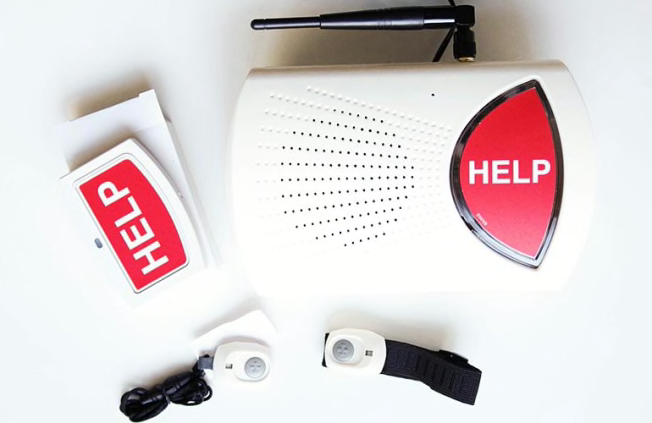
Photo: Bay Alarm Photo: Bay Alarm
Monthly cost for in-home landline service: $20.
Monthly cost for in-home cellular service: $30.
Monthly cost for mobile GPS tracking option: $25 or $30, depending on plan and features chosen.
Monthly cost to add fall detection: $10.
Commitment or contract: None.
Activation fee: None.
Cancellation fee: None (full refund, minus shipping costs, if you cancel in the first 30 days).
Monitoring center certified by: Underwriters Laboratories (UL), a safety and consulting company.
Alternate languages available: 180. Customer selects language when purchasing device.
Network provider for cellular or mobile service: AT&T.
Nonemergency customer-service hours: 6 a.m. to 5 p.m. Pacific time Monday through Friday; 8 a.m. to 4:30 p.m. Pacific time Saturday and Sunday.
Battery life of in-home call button: Five years for button without fall detection; two years for button with fall detection.
Mobile unit battery life: Four days.
Contact info: bayalarmmedical.com; 877-522-9633.
GreatCall Lively Mobile Plus
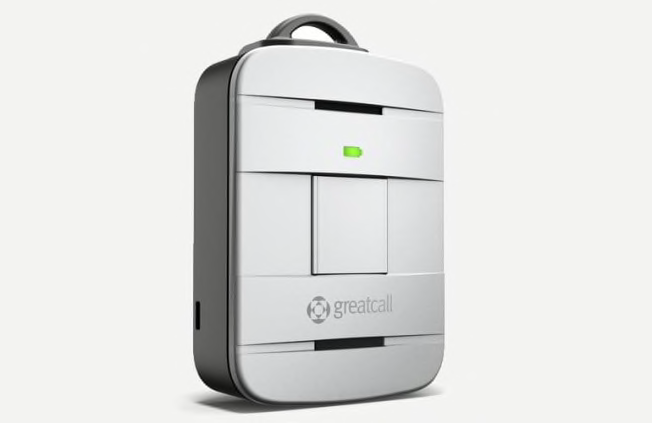
Photo: Great Call Photo: Great Call
Monthly cost for in-home landline service: No in-home-only service.
Monthly cost for in-home cellular service: $25 to $50, depending on plan ($50 device fee; service available in and out of home).
Monthly cost for mobile GPS tracking option: $25 to $50, depending on plan ($50 device fee).
Monthly cost to add fall detection: $15 (fall detection plan includes additional features).
Commitment or contract: None.
Activation fee: $35 via phone or $25 online.
Cancellation fee: None (full refund for first month of service and activation fee, except shipping costs and $10 restocking fee, if device is returned in first 30 days).
Monitoring center certified by: International Academies of Emergency Dispatch.
Alternate languages available: More than 100.
Network provider for cellular or mobile service: Verizon.
Nonemergency customer-service hours: 6 a.m. to 7 p.m. Pacific time Monday through Saturday; 7 a.m. to 4 p.m. Pacific time Sunday.
Battery life of in-home call button: No in-home-only service.
Mobile unit battery life: Up to 80 hours.
Contact info: greatcall.com; 866-359-5606.
Life Alert
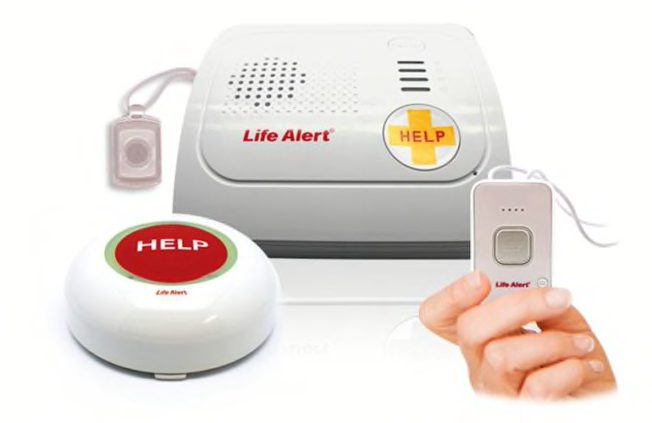
Photo: Life Alert Photo: Life Alert
Monthly cost for in-home landline service: $49.
Monthly cost for in-home cellular service: $49.
Monthly cost for mobile GPS tracking option: $19.
Monthly cost to add fall detection: Not offered.
Commitment or contract: 36 months (void if user enters nursing home, has 24-hour professional care, or dies).
Activation fee: $0 to $95, depending on plan.
Cancellation fee: Varies depending on situation.
Monitoring center certified by: UL, TMA (CSAA) Five Diamond Certified Monitoring Center.
Alternate languages available: Some dispatchers speak multiple languages, but no contract with translation service.
Network provider for cellular or mobile service: AT&T.
Nonemergency customer-service hours: 6 a.m. to 6 p.m. Pacific time Monday through Friday; 6:30 a.m. to 3 p.m. Pacific time Saturday; 7 a.m. to 1 p.m. Pacific time Sunday.
Battery life of in-home call button: Batteries never need charging. Last up to 10 years.
Mobile unit battery life: Batteries never need charging.
Contact info: lifealert.com; 800-360-0329.
LifeStation
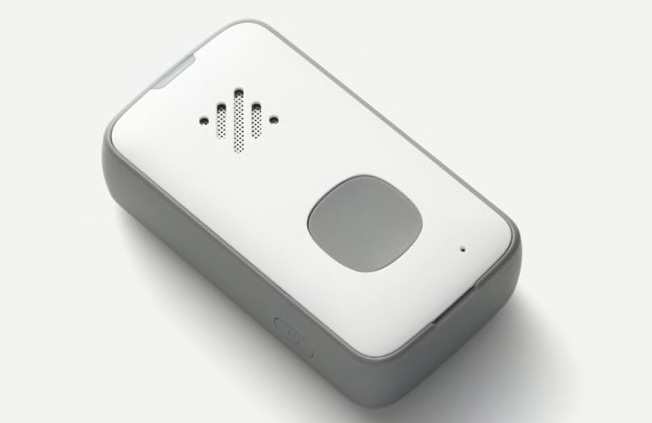
Photo: Life Station Photo: Life Station
Monthly cost for in-home landline service: $22.
Monthly cost for in-home cellular service: $31.
Monthly cost for mobile GPS tracking option: $38.
Monthly cost to add fall detection: $10.
Commitment or contract: None.
Activation fee: None.
Cancellation fee: None (full refund, minus shipping costs, if you cancel in the first 30 days).
Monitoring center certified by: UL and TMA.
Alternate languages available: More than 240 available via third-party interpreter.
Network provider for cellular or mobile service: AT&T and Verizon.
Nonemergency customer-service hours: 24/7.
Battery life of in-home call button: Up to five years.
Mobile unit battery life: Up to five days.
Contact info: lifestation.com; 855-701-0968.
Medical Alert
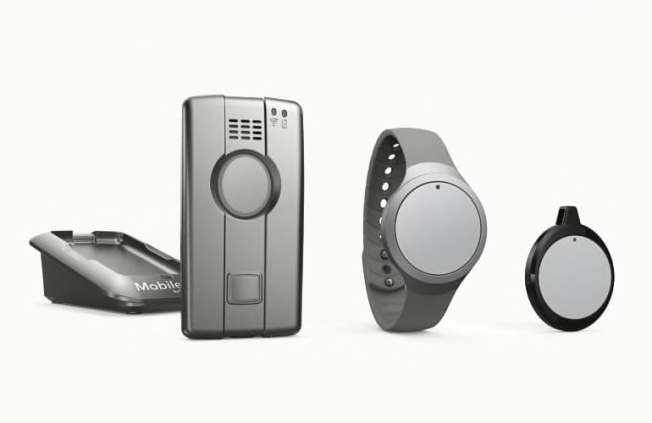
Photo: Connect America Photo: Connect America
Monthly cost for in-home landline service: $20.
Monthly cost for in-home cellular service: $30.
Monthly cost for mobile GPS tracking option: $38.
Monthly cost to add fall detection: $10.
Commitment or contract: None.
Activation fee: None.
Cancellation fee: None (full refund if you cancel in the first 30 days, prepaid shipping label for returns provided).
Monitoring center certified by: UL, Factory Mutual Global (FMG).
Alternate languages available: Yes, customer may specify language at time of purchase.
Network provider for cellular or mobile service: AT&T.
Nonemergency customer-service hours: 9 a.m. to 8 p.m. Eastern time Monday through Friday; 9 a.m. to 6 p.m. Eastern time Saturday; 9 a.m. to 5 p.m. Eastern time Sunday.
Battery life of in-home call button: More than five years.
Mobile unit battery life: Up to 36 hours.
Contact info: medicalalert.com, 800-800-2537.
Medical Guardian

Photo: Medical Guardian Photo: Medical Guardian
Monthly cost for in-home landline service: $30.
Monthly cost for in-home cellular service: $35.
Monthly cost for mobile GPS tracking option: $40 (Active Guardian) or $45 (Mobile Guardian), depending on the product.
Monthly cost to add fall detection: $10.
Commitment or contract: None.
Activation fee: None.
Cancellation fee: None (prorated refund, including shipping costs, if you cancel within 10 days of receiving shipment).
Monitoring center certified by: UL, TMA Five Diamond, Electronic Security Association, FMG.
Alternate languages available: Spanish, and will connect with third-party service for other languages.
Network provider for cellular or mobile service: AT&T.
Nonemergency customer-service hours: 9 a.m. to 9 p.m. Eastern time Monday through Friday; 9 a.m. to 5 p.m. Eastern time Saturday.
Battery life of in-home call button: Up to five years.
Mobile unit battery life: 24 hours or five days, depending on system.
Contact info: medicalguardian.com; 800-668-9200.
MobileHelp
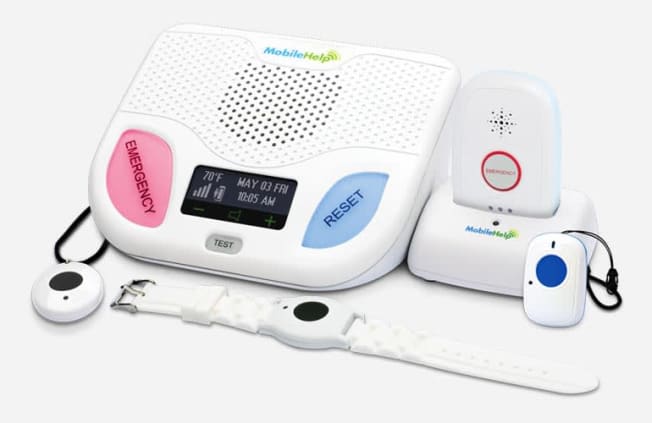
Photo: MobileHelp Photo: MobileHelp
Monthly cost for in-home landline service: $20. Must request by phone.
Monthly cost for in-home cellular service: $20.
Monthly cost for mobile GPS tracking option: $25. Must request by phone.
Monthly cost to add fall detection: $10. $7.50 when combined with equipment protection.
Commitment or contract: None.
Activation fee: $0. Processing fee may apply to select plans.
Cancellation fee: None. (Full refund, including shipping costs, if you cancel in the first 30 days. Prorated refund, minus shipping costs, when you cancel after the first 30 days, call and return equipment.)
Monitoring center certified by: UL.
Alternate languages available: 240 languages through interpretation service.
Network provider for cellular or mobile service: AT&T.
Nonemergency customer-service hours: 8 a.m. to 8 p.m. Eastern time Monday through Friday; 9 a.m. to 6 p.m. Eastern time Saturday.
Battery life of in-home call button: Eight to 10 years.
Mobile unit battery life: Up to 48 hours while in use and up to five days in standby mode.
Contact info: mobilehelp.com; 800-764-2091.
Philips Lifeline
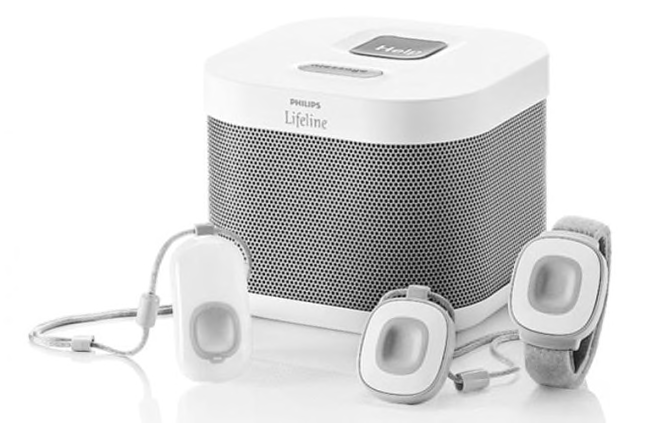
Photo: Philips Lifeline Photo: Philips Lifeline
Monthly cost for in-home landline service: $30 or $45, depending on plan.
Monthly cost for in-home cellular service: $44 or $59, depending on plan.
Monthly cost for mobile GPS tracking option: $50, $100 one-time device fee (uses additional locating technologies, including WiFi).
Monthly cost to add fall detection: $0 to $15, depending on equipment and plan.
Commitment or contract: None.
Activation fee: $0 to $50.
Cancellation fee: None (no return shipping fee).
Monitoring center certified by: UL.
Alternate languages available: More than 200.
Network provider for cellular or mobile service: AT&T.
Nonemergency customer-service hours: 8 a.m. to 8:30 p.m. Monday through Friday and 9 a.m. to 5:30 p.m. Saturday, Eastern time.
Battery life of in-home call button: Five years.
Mobile unit battery life: Two to three days or up to seven days, depending on system.
Contact info: lifeline.philips.com; 800-566-6218.
Editor’s Note: A version of this article also appeared in the April 2018 issue of Consumer Reports On Health. This article includes product updates from the listed companies.




















